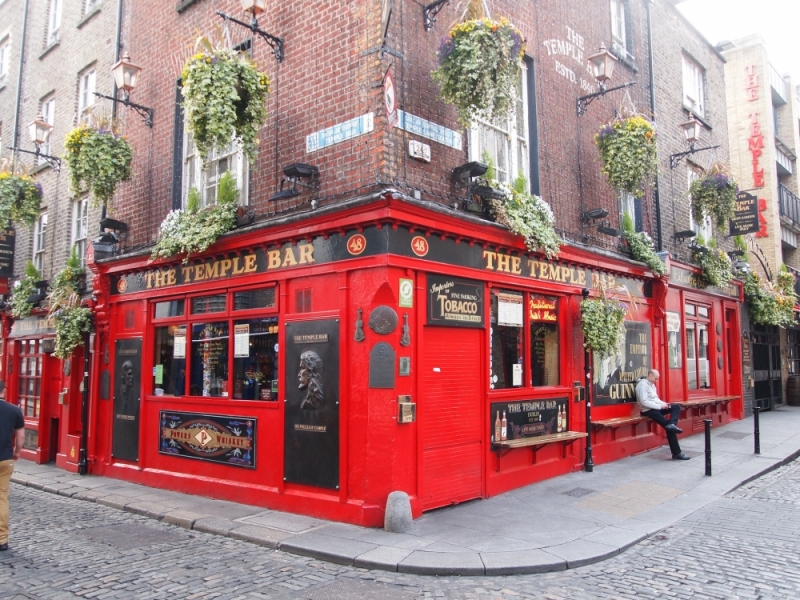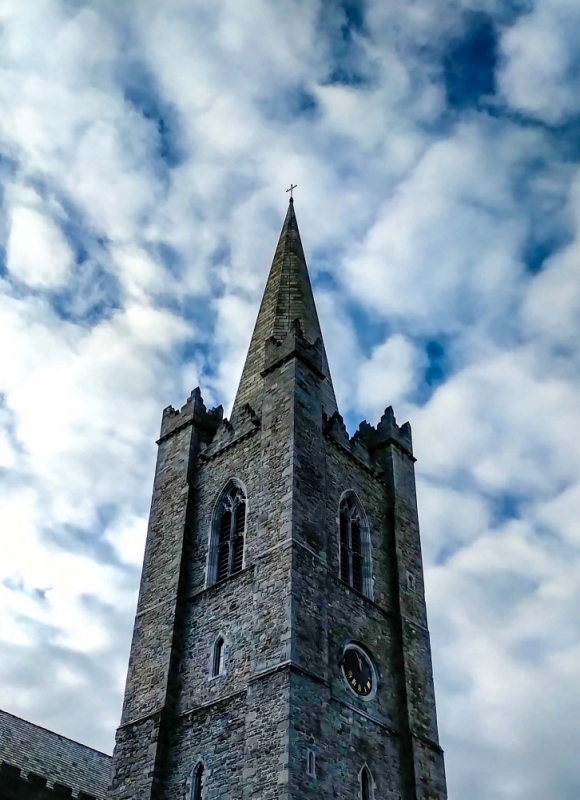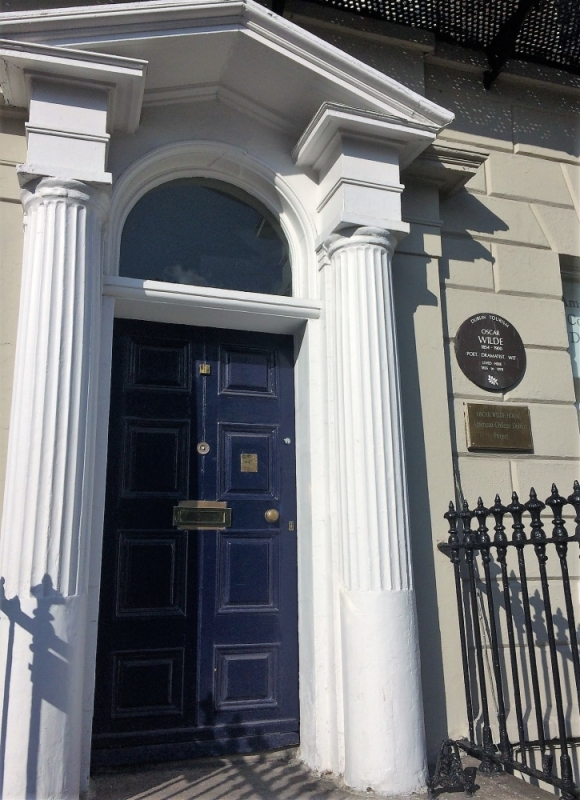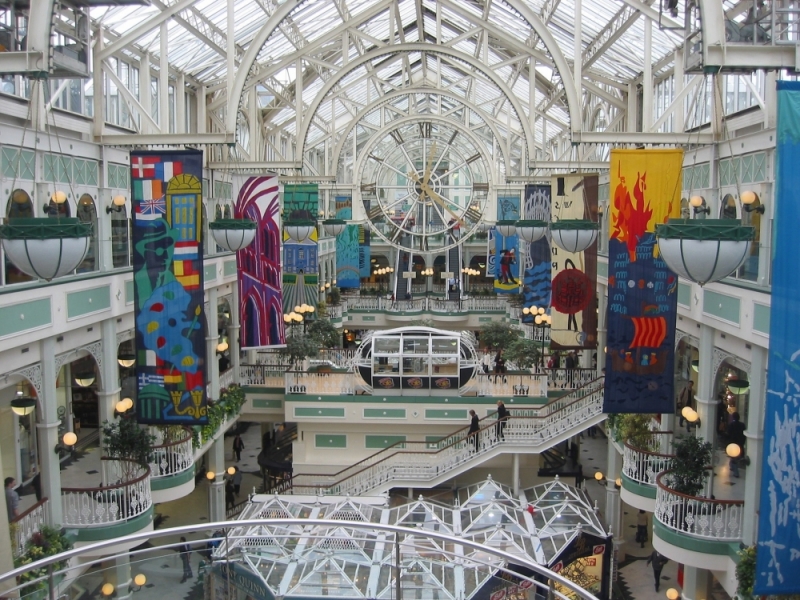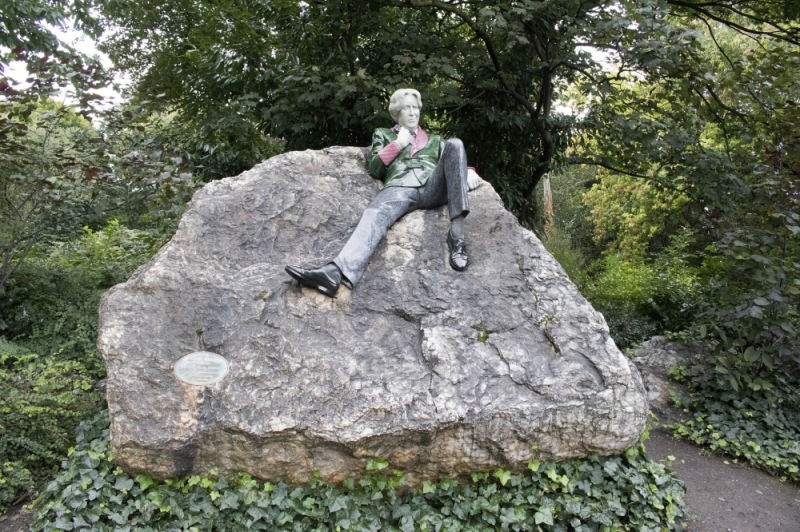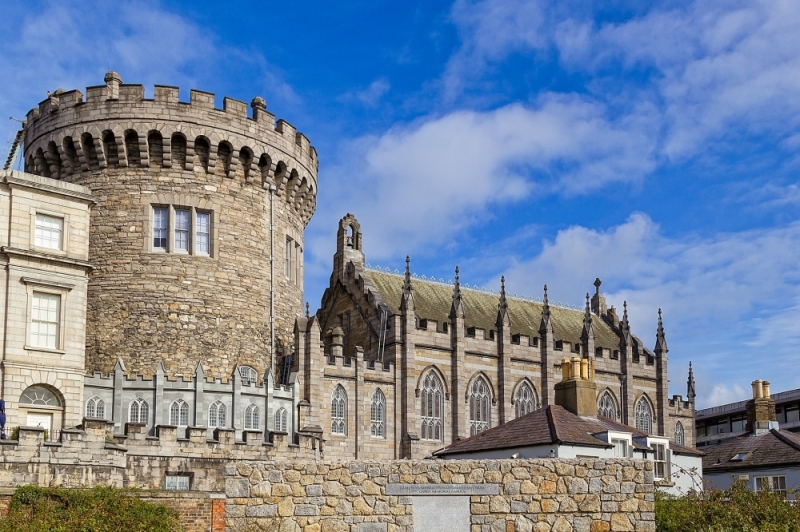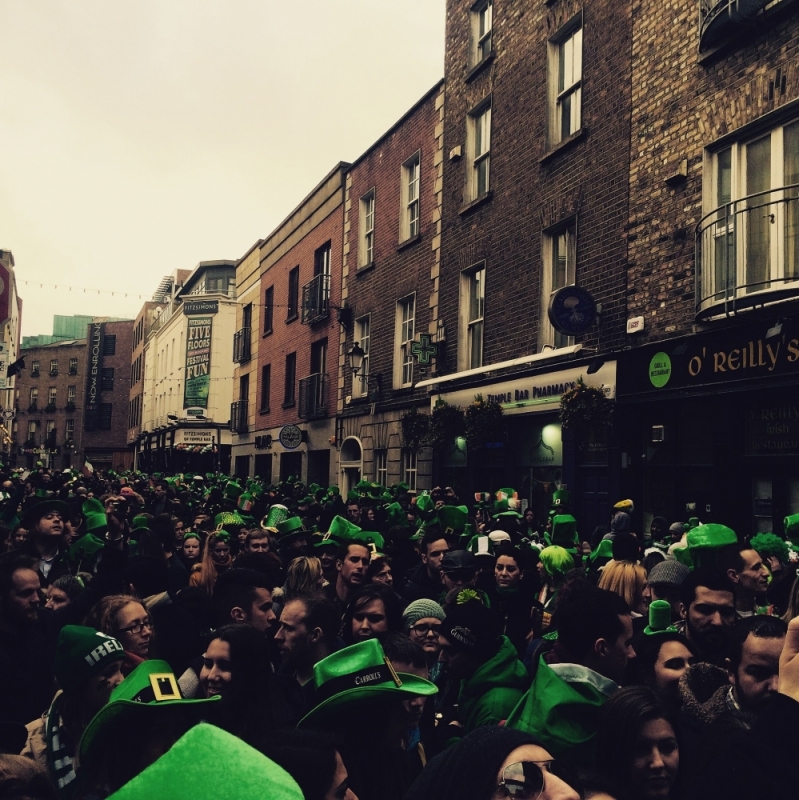History
Dublin is the capital of Ireland and its first historical information dates back to the end of the 3rd century AD; in the 9th century it was probably a Danish colony to give it its current name, after transforming the existing village into a fortress. In 1170, after a battle, the Anglo Normans took over the city and in 1172 Henry II made it the seat of the Irish government. The continuous immigration of colonists from England led to the indigenous resistance, which culminated in 1209 with the massacre of the English ruling class. In 1486 Lambert Simmel was crowned and, later, the city submitted to Henry VII. In 1534, Dublin resisted the anti-English revolutionaries led by Thomas Fitzgerald, while in 1646 he rejected the Irish Catholics led by Rinuccini. After the revolution of 1688, the city, remaining faithful to the Stuarts, hosted James II, who had to surrender after the battle of the Boyne of 1690, when William III imposed himself. Between 1867 and 1868 the city was the seat of the Phoenicians' conspiracy against England and was involved in the agitation for the Home Rule, up to the independence revolt of Easter 1916. In 1921, Dublin was the seat of both the government and of the Parliament of Ireland and in 1922, it was the seat of the republican revolt led by E. De Valera. To date, the city retains the eighteenth-century urban structure of the Georgian age. To the north of the city, you can admire the General Post Office, in neoclassical style or Parnell Square, a square surrounded by two important eighteenth-century buildings, such as Rotunda Hospital and Charlemont House, Le Four Courts and the Custom House. Going south, however, are the Bank of Ireland and Trinity College, with buildings dating from the 18th and 19th centuries. Trinity College, one of the most important cultural buildings, founded in 1592 by Elizabeth I, has a library with about 400,000 Egyptian, Greek, Italian, Anglo-Saxon and Irish volumes and manuscripts.
Visiting Dublin you will be captivated by its atmosphere, when you talk to people, stroll along the Liffley or sip a Guinnes, in one of the many pubs in the city. Dublin is famous not only for its elegance, but also for the easy-going spirit of its citizens. To date, the city is presented as a fusion of styles, ranging from Gothic-medieval to Georgian. We advise you to start your tour, getting lost in one of the most prestigious campuses in the world: Trinity College . This university was home to the likes of Jonathan Swift, Oscar Wilde, Bram Stoker and Samuel Beckett. The Trinity looks like a majestic building, in Georgian style, with large green spaces. You can walk and fully enjoy this collegiate atmosphere, perhaps watching some cricket and badminton matches organized by the students. Inside the library, there is also the well-known "Book of Kells", a precious manuscript on which the four Gospels in Latin are also written. A few steps from Trinity College, there is Grafton Street , one of the main shopping streets of the city, where you can also admire the statue of Molly Malone, just down the street. This street is full of street artists and songwriter bands. Once, in this street, Bono from U2 improvised a show. In this street you will also find numerous boutiques, jewelers and important warehouses, including Brown Thomas. Take a tour of the Bewley Oriental Café , open since 1927. Also not to be missed is the Powerscourt Townhouse Center. After a break at the Bewley Café, take a stroll from Grafton Street, which leads to the Arch of the Riflemen, the main entrance to St. Stephen's Green . This 9-hectare park is surrounded by numerous Georgian buildings and was redeveloped during the 1960s. Not to be missed is the Guinness Storehouse , a real beer museum, dedicated to the famous Irish dark beer, Guinnes. It is a seven-story pint-shaped Guinness structure. The building was built in 1904 and on the top floor is the Gravity Bar, a sensational venue with a view of the city.
St. Patrick's Cathedral
St Patrick's Cathedral is one of two Protestant cathedrals in the world in central Dublin. This basilica, decorated with splendid stained glass windows, houses inside a sumptuous organ made up of 4,000 pipes. By visiting this majestic cathedral, you will be enveloped in a solemn and sacred atmosphere. In the cathedral are the remains of over 500 prominent Irish personalities, including that of Jonathan Swift.
Heading towards the Liffley River, you can admire the architecture of Christ Church Place , a church dating back to the 11th century. The Danish king of Dublin laid his first stone in 1038, although the original church was replaced by a construction from 1172, commissioned by Richard of Clare (Earl of Pembroke) better known as Strongbow. Inside the church, it is possible to admire the statue of the Earl of Pembroke, a casket containing the relics of San Lorenzo O 'Toole and a large underground crypt, originally from 1170. The center of administrative power in Dublin is Dublin Castle , located between Christ Church Cathedral and St. Patrick's Cathedral. It is a castle of Norman origin probably dating back to 1204, perhaps built at the behest of John I King of England, called John without land. To date, Dublin Castle is home to official state ceremonies. In a building inside Dublin Castle, there is the Chester Beatty Library , a place where culture, history and artistic tradition are enclosed. This library-museum contains priceless works belonging to the collection of Sir Alfred Chester Beatty, a magnate who in 1969 bequeathed his collection to the Irish people.
Four Courts
Four Courts is an elegant Dublin palace, located on the north bank of Liffley, and home to the supreme courts of justice in Ireland. Admiring the architecture of this building, it is possible to notice the Corinthian columns, the imposing dome and the external statues, carved by Edward Smyth.
One of the most striking buildings in the city, built in 1818, is the Dublin General Postal Building. It is a neoclassical building and was designed in 1916 by Francis Johnston.
The Bank of Ireland is located in a building built in 1729, which was originally intended to house the Irish Parliament. To date, the headquarters of the Bank of Ireland, it still retains architectural elements from that period, including the Chamber of Lords.
If you want to immerse yourself in the greenery, there is the Phoenix Parc, so vast as to be twice the size, compared to Central Park in New York where, walking through its tree-lined streets, you can also come across a colony of deer. Inside there is a zoo, a castle dating from the seventeenth century, sports fields, beautiful gardens and an obelisk 63 meters high.
Merrion Square is a popular square located south of Dublin city. It acquired the name in 1762 and its works were completed in the early 19th century. This square represents one of the greatest examples of Georgian architecture in the city and, in the past, the buildings surrounding the square were residential, but today they are mostly offices. Nearby, you will find many interesting places to visit, including the National Museum of Ireland, the National Gallery of Ireland, the seat of the Irish Red Cross, the Central Catholic Library, the Leinster House and there is also a large park, called Archbishop Ryan Park. Famous people have also lived in this square, such as Oscar Wilde, William Butler Yeats, and Daniel 0 'Connell.
Irish National Gallery
In the Irish National Gallery , a collection of precious masterpieces is kept, including the Capture of Christ by Caravaggio, the Annunciation by Rubens, Flemish works and English and French impressionist works. In addition, there is a room dedicated to the works of the Irish illustrator and cartoonist Jack Yeats, who created the first Sherlock Holmes comic in 1894. An important testimony to the history of Ireland is the Kilmainham Gaol prison, one of the largest prisons in Europe, known to have been the scene of important historical events in Ireland from 1780 to 1920, until it was included in the Heritage circuit Ireland. In its cold and dark cells, the history of Ireland's political battle for independence is contained. In fact, both criminals and political rebels were imprisoned here. For the more adventurous, it is also possible to be locked up in a cell, to experience the feelings that prisoners once felt. Near O 'Connell Street, an area very popular with young Dubliners, there is a 120 meter high steel tower, known as " The Spire " or also as the "Monument to the Light" which is part of an urban redevelopment project , which has received several nicknames from the locals over time. If, after immersing yourself in nature, you want to indulge in some shopping, Grafton Street is the right place for you. Between a shop and a bar, you can also admire the characteristic four-storey Georgian houses. During the Christmas period, between the decorated shop windows and the lights, which make the place truly suggestive, you can breathe the Christmas air.
Abbey Theatre
Don't miss a ride in the Dublin Literary Pub Crawl , near Grafton Street. Here you can discover Irish cultural life and get to know the prominent personalities of Irish literature, Irish history and Irish architecture. The Abbey Theater , also known as the National Theater of Ireland, is a historic theater that opened its doors to the public, for the first time in 1904 and, despite the original location being destroyed by fire in 1951, the theater continued to feature theatrical to date. This theater had an incredible success, thanks also to the collaboration of Synge, one of the best known playwrights of the time. There were also performances by authors such as Yeats, Lady Gregory, Moore, Martyn, TC Murray and Lennox Robinson. Going to the Grand Canal Quay, near Pearse Street, it is possible to visit the dock of the Grand Canal through a historical-informative tour
Movida and entertainment
Visiting Dublin is like immersing yourself in a timeless reality with green meadows, churches and Celtic cemeteries. Dublin, however, is also a modern city, now home to numerous multinationals. Cut in two by the Liffley River, the city has undergone urban changes over time, adapting its urban structure to that of many European cities. Dublin offers tourists many attractions, there are numerous parks for nature lovers, including St Stephen's Green and the huge Phoenix Park ; the district in which the nightlife is concentrated, is the Temple Bar , full of pubs, street artists and young people who want to have fun, (especially during the celebrations of St. Patrick). For lovers of literature, it is possible to visit monuments and museums of the city, and to follow the itineraries narrated in the novels of Irish literature. If you want to get away from the hustle and bustle, you can head to Grafton Street or go to South Great George's Street . If you are looking for trendy bars and clubs, the right places are Capel Street, Queen Street and King Street . Instead, near Harcourt Street Station , you will find nice little places where you can attend live music shows or theatrical comedies. If you can, enjoy Dublin during St. Patrick's Day . The Fitzsimons , is one of the coolest clubs in Dublin, and is the ideal place to listen to Irish music and drink beer, fully immersing yourself in the folkloric atmosphere of the city. Instead, if you want to breathe the atmosphere of the past, we recommend you go to Brazen Head, the oldest pub in the city, near the Guinness brewery and the Cathedral of Christ Church. The Hogan's Bar is a real institution for the inhabitants of the city, where between one beer and another, you can meet both students and professionals. In " The Market Bar ", on the other hand, you can enjoy various Mediterranean tapas, olive paté and chicken skewers. If you want to try typical products, in Dublin there are two moments of the day dedicated to food: breakfast and dinner. According to Irish tradition, breakfast consists of egg sausages, bacon and tea, while for dinner it is possible to eat various menus of meat and fish. In the afternoon, we recommend you stop in one of the main bars or cafes in the city, to taste the famous Scones, raisin-based biscuits, pieces of chocolate, dried fruit, blueberries or berries, perhaps accompanying them to a tea. For dinner, you can go to one of the Temple Bar pubs to taste typical products, including Beef Guinness Pie , based on beef cooked in Guinness and covered with a layer of puff pastry.
Climate, curiosity and advice
Climate : Dublin's climate is oceanic, cool and humid throughout the year. The average temperature fluctuates from 5 degrees in January and February, to 15.5 ° C during July and August. The rains are well distributed throughout the year, making them frequent even in summer. The best time to visit Dublin is from June to August.
Curiosity : the Dublin natives, the so-called dubliners, speak an Irish slang, full of idiomatic words and phrases that cannot be found in any vocabulary, which only true Irish people can understand. On the island, in reality there are many variations of slang, some of which are used only in certain counties or even only within the city walls. We will report some characteristic expressions:
- What's the craic? - How are you?
- As useful as a cigarette lighter on a motorbike - As useful as a lighter on a motorcycle (therefore, completely useless)
- Hold yer horses - Wait a minute
Tips : if you want to get around the city you can move by bus, tram, taxi or by renting a bicycle. Just choose!
Curiosity : the Dublin natives, the so-called dubliners, speak an Irish slang, full of idiomatic words and phrases that cannot be found in any vocabulary, which only true Irish people can understand. On the island, in reality there are many variations of slang, some of which are used only in certain counties or even only within the city walls. We will report some characteristic expressions:
- What's the craic? - How are you?
- As useful as a cigarette lighter on a motorbike - As useful as a lighter on a motorcycle (therefore, completely useless)
- Hold yer horses - Wait a minute
Tips : if you want to get around the city you can move by bus, tram, taxi or by renting a bicycle. Just choose!


